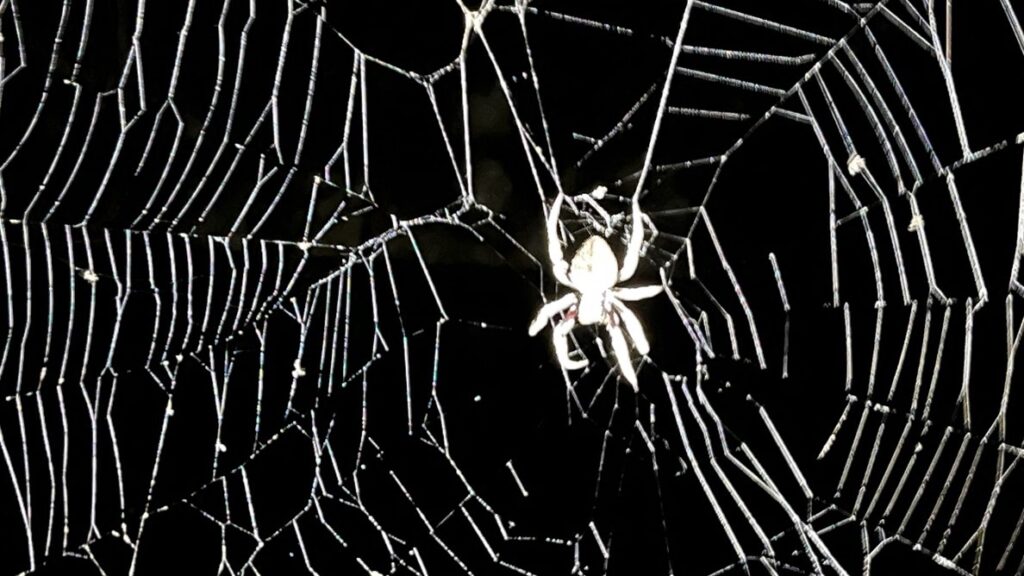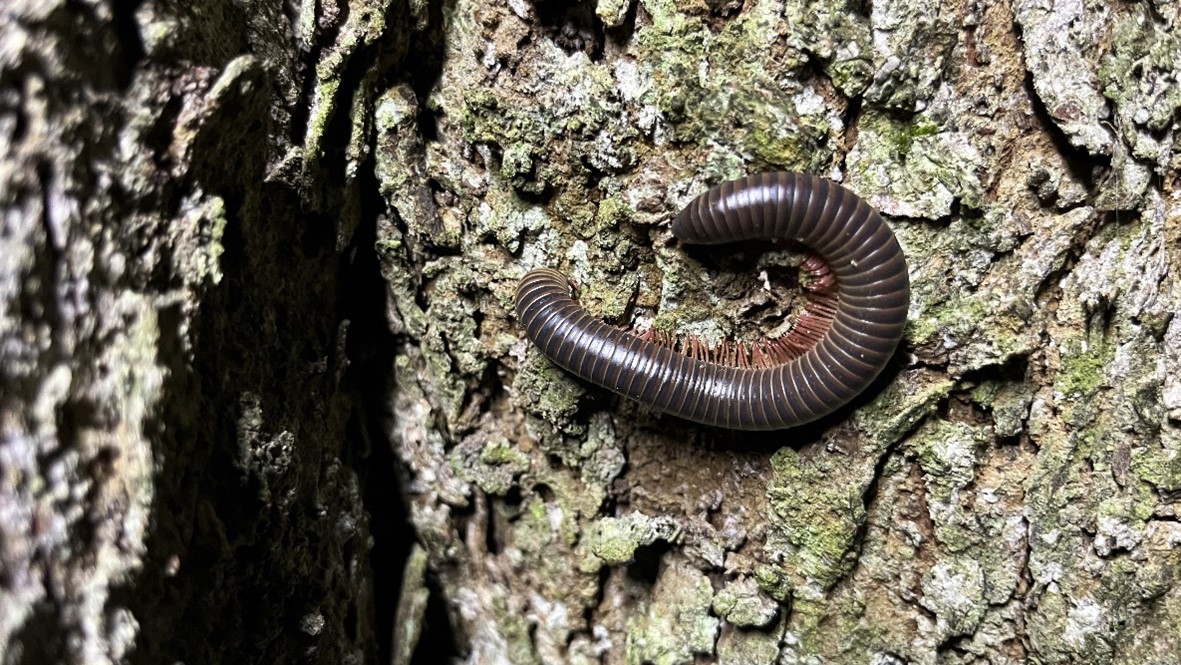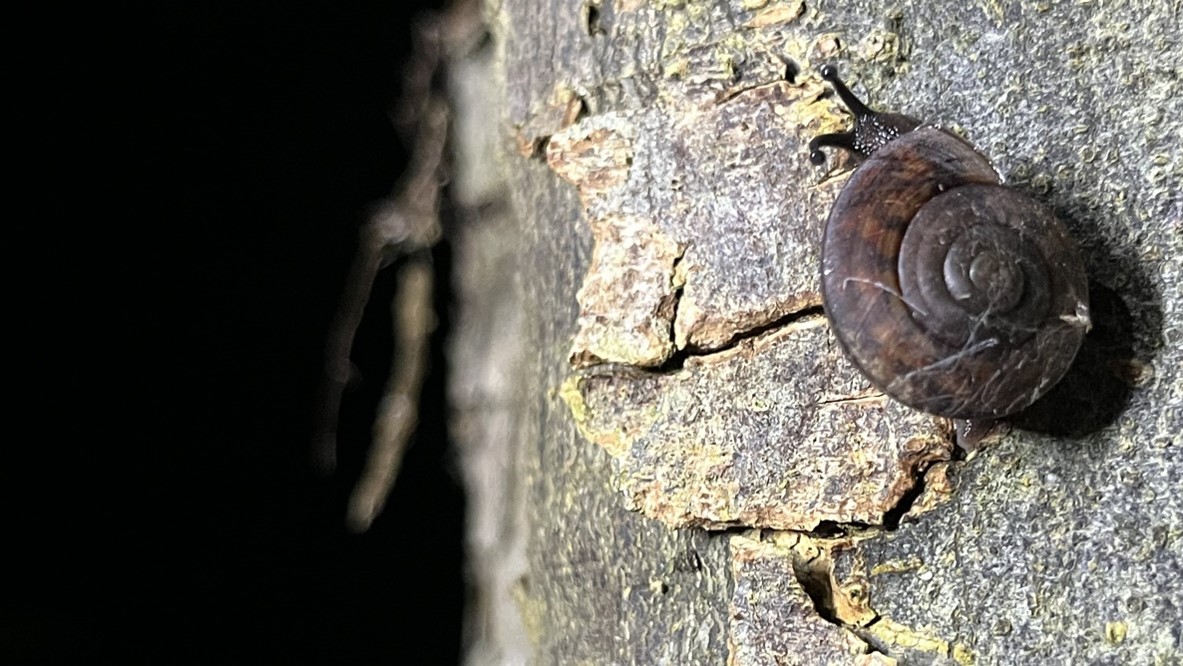22 April 2024

Many rainforest invertebrates are nocturnal and remain well hidden during the day. In this lesson, and the video above, we check the nightlife of some of the invertebrates associated with rainforest trees.
Tree trunks in the rainforest provide a great habitat for invertebrates with their bark providing structure and sources of food including algae and bacteria which can be exploited by invertebrates.

If you select a few trees during the daytime and investigate the surface of their trunks you may not find any signs of life on the bark. If you return to the same tree at night, you may observe nocturnal species including millipedes and centipedes as well as snails and insects moving over the bark. If you look into the branches, you may also observe web weaving spiders setting their traps to capture moths and other nocturnal flying insects. This habit would also reduce their chance of being taken by a daytime insectivore including many species of birds.

Being nocturnal may indeed be a good way of avoiding most of the visual predators including birds as well as other predators such as lizards and skinks, which use vision to locate their prey. During the day, these same species adopt a cryptic habit, hidden in the nooks and crannies of the rainforest vegetation.